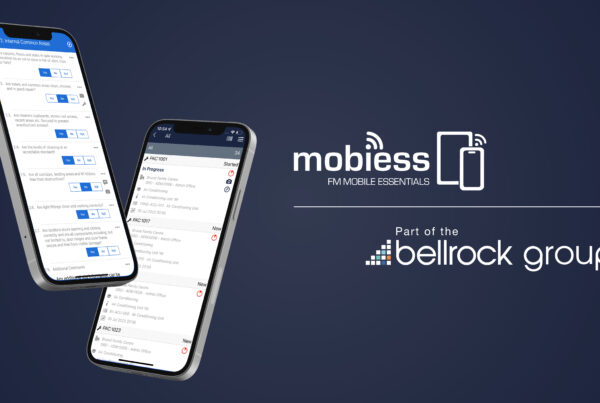Creating a predictive maintenance strategy using CAFM
Maintaining your building assets has always been an essential part of any facilities management team and strategy, whether you manage a retail store, a larger residential building, hospital, or care home. Without proper maintenance, you are increasing your risk of incidents, unplanned downtime, and broken assets, which could result in thousands of pounds of building maintenance overspending.
Suppose your business has been using a Computer Aided Facilities Management (CAFM) system for some time – how do you continue to drive savings if you have a highly effective and efficient planned maintenance program? Starting with looking at creating a predictive maintenance strategy using sensor technology, the Internet of things (loT), data, and analytics, you can continue to help prevent potential financial overspending while simultaneously improving efficiency, safety, and productivity throughout your business.
What is Predictive Maintenance?
Using sensor technology, a predictive maintenance strategy can be achieved through the process of collecting data generated by strategically placed sensors to indicate potential issues or equipment failures that require maintenance, diagnostic check, or a reactive call-out. Introducing sensor technology allows you to monitor, assess, and determine the subsequent courses of action remotely, reducing the need to send an engineer to understand what is happening with the asset.
Integrating your sensor technology within your CAFM/ Integrated Workplace Management System (IWMS) is a fundamental element of predictive maintenance. Each work together seamlessly to give you the data you need.
Predictive maintenance as a progression from a standard planned maintenance program has several benefits, from saving on labour to reducing risk and asset wear and tear. The advantages of a predictive maintenance solution are based on what the business needs and the assets and equipment you have on-site. It is worth to note, this may not be suitable or cost-effective for all businesses.
Building a Predictive Maintenance Program
When building a predictive maintenance program for your business, you must consider the data in front of you and the following steps to ensure a successful program:
Identify Critical Assets within your Business: Implementing a predictive strategy for maintenance first requires facilities managers to identify critical assets. These critical assets are often categorised and if failed, they may affect trade, health, and safety and and/or be a risk to the business or life, depending on the type of business activity. They could be doors/shutter, HVAC, and lift used daily to run your business and higher value assets with higher repair and replacement costs.
According to ARC Advisory Group’s Enterprise Asset Management and Field Service Management Market Study, the average company can reduce its spending on preventive maintenance by up to 50%.
Comprehensive Asset Database and Site Survey: Once you have identified your assets, the current condition and critical assets, you need to create a comprehensive asset database that includes your identified assets. If you have been using Concerto for some time, you might already have established this. If not, we can help with building surveys and asset collection and condition. Creating your asset database allows you to manage and track assets for individual locations and the wider business. You can also keep track of both new and outdated assets, including spending on each critical asset that will support the future predictive maintenance program.
Ensuring an asset database is successfully established helps to provide historical data in the event of asset failure or interruption.
Implementing IoT: If you can measure it, you can manage it. Implementing IOT sensors ensures that you can manage and identify changes in your assets and action before failure. If a failure occurs, you will be able to ascertain and understand what happened and collect the relevant data to prevent it from happening in the future. When introducing sensors and data-tracking solutions, your assets will constantly be monitored, even when your buildings are closed.
Sensors provide streamlined information to your CAFM/IWMS system regarding the overall operations of the assets within your buildings.
It is essential to understand that retrofitting sensors to older equipment presents challenges. If possible, you may have to monitor the environment around them to understand any changes to the asset’s operation. An example of this might be air quality monitoring to highlight issues with the ventilation system or air conditioning. These complex assets should be highlighted as part of your asset collection and condition reporting.
Start With a Pilot Scheme
Working with your maintenance providers, technology supplier, and your internal property team, determine what data should be collected to provide you with the information to move to a predictive maintenance program.
Once the identified data is collected and analysed, you will gain valuable insight into equipment needs, patterns, and the current conditions of the assets, which you will be able to compare against manufacturer’s guidelines.
Once the asset failure parameters have been set, it is possible to deploy a pilot to certain buildings or assets for ongoing tests and validation that the alert setting is correct. Once proven that you are getting what you need and driving the efficiency for you and your supply chain, you can roll out to further building or assets.
This process can take from a few weeks to a few months, but it is worth taking your time to get it right to make sure it is supporting your facilities strategy and your wider FM supply chain.
Workflow Improvement
Once you have successfully completed the pilot phase, you should investigate your workflows, collaborating with your internal team and the wider FM supply chain, i.e. your helpdesk, maintenance suppliers and CAFM/IWMS providers. This will enable you to imbed the improvements and efficiency your new IoT has given you.
Ready, Steady, Go!
Providing your business with a successful predictive maintenance strategy is not easy. Moving to a predictive maintenance strategy requires buy-in from multiple internal and external stakeholders and is far from simplistic in its construction. You must first ensure it is viable for your business as it will need capital investment and a mature planned maintenance program.
Businesses that are ready for a predictive maintenance strategy more often have a well-established facilities management team, have already driven down waste within their maintenance activities, and are looking for the next step. For those who are still scaling up their facilities management function but are interested in a predictive and proactive maintenance solution that is more suitable, the Concerto team, including the support from Bellrock, can help you on your journey.
If establishing a predictive and proactive maintenance strategy is your next step, please speak with the experts. With a proper predictive maintenance strategy, we can support you in streamlining your operations, maximising your output, reducing the risk to your business, and reducing the risk of asset failure.








